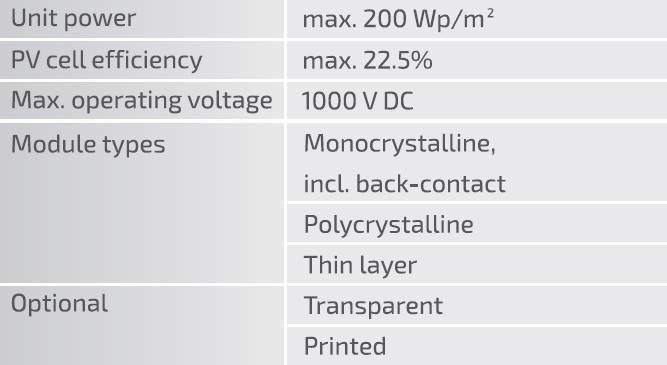The point fastening system has the immense potential to create very bold architectural solutions with uniquely elegant appearances and a long service lives. The solutions based on the point fastening system are perfect for large buildings, small (street) architecture or custom projects.
The range is complemented by dedicated fastening systems for outer louvres, ventilated façades or roof structures. BIPV inextricably binds PV modules to the fastening systems. ML System carries an entire range of fastening solutions for even the most unique design requirements.
SYSTEM COMPONENTS:
- Outer cladding, made of PV modules and fastened at separate points to the substructure
- Substructure (a metallic grating), fastened to the building outer wall, for example
- Fastening components for mounting the PV modules to the substructure and for mounting the substructure to the building elevation (i.e. hardware, accessories, bolts, screws, anchors, and rivets).
The photovoltaic outer skin with its point-fastened PV modules is a perfect choice for vertical walls and slopes. When installed as a building façade, an insulating gap is left between the PV modules and the structural wall to protect the building from overheating and moisture condensation.
The no-frame glass-to-glass PV modules (opaque or transparent) will greatly improve the aesthetic finish of building façades and add a unique touch to the overall appearance.
The point fastening is excellent for entrance canopies, especially when combined with the NoFrost PV modules to prevent snow from settling on the shelter top.
The photovoltaic outer skin with its point-fastened PV modules brings great points of value for project investors, with the prime ones being:
- High aesthetic value with freedom of design to adapt the building or frontal form to meet specific requirements: PV module sizes and colours are customizable.
- Improved indoor comfort thanks to better sound-proofing of the building.
- High resistance of the façade system to changing weather conditions.
- Reduced façade overheating with an additional solar radiation barrier.
- Generation of green power.










